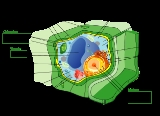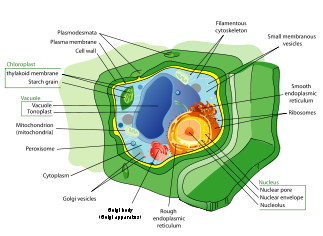
Cold hardening
Encyclopedia
Cold hardening is the physiological and biochemical process by which an organism
prepares for cold weather
.
 During the winter months, as the leaves fall off deciduous
During the winter months, as the leaves fall off deciduous
species and the temperature
drops, the cold forces a stop to water
movement in plant
s. Freezing water can also cause irreversible damage to cell
s in plants as water solidifies. To guard against this, plants prepare for winter with a process called cold hardening. The process begins as the cell membrane
permeability undergoes a change that permits water to seep into the intracellular voids. In addition, the cells store large amounts of sugars in the protoplasm
, decreasing its freezing point.
Cold hardening protects plants from both chilling injury and freezing injury. Chilling injury occurs at 0-10 degrees Celsius, as a result of membrane damage, metabolic changes, and toxic buildup. Symptoms include wilting, water soaking, necrosis
, chlorosis, ion leakage, and decreased growth. Freezing injury occurs at temperatures below 0 degrees Celsius. Symptoms of extracellular freezing include structural damage, dehydration, and necrosis. If intracellular freezing occurs, it will lead to death. Freezing injury is a result of lost permeability, plasmolysis, and post-thaw cell bursting.
Organism
In biology, an organism is any contiguous living system . In at least some form, all organisms are capable of response to stimuli, reproduction, growth and development, and maintenance of homoeostasis as a stable whole.An organism may either be unicellular or, as in the case of humans, comprise...
prepares for cold weather
Weather
Weather is the state of the atmosphere, to the degree that it is hot or cold, wet or dry, calm or stormy, clear or cloudy. Most weather phenomena occur in the troposphere, just below the stratosphere. Weather refers, generally, to day-to-day temperature and precipitation activity, whereas climate...
.
Plants

Deciduous
Deciduous means "falling off at maturity" or "tending to fall off", and is typically used in reference to trees or shrubs that lose their leaves seasonally, and to the shedding of other plant structures such as petals after flowering or fruit when ripe...
species and the temperature
Temperature
Temperature is a physical property of matter that quantitatively expresses the common notions of hot and cold. Objects of low temperature are cold, while various degrees of higher temperatures are referred to as warm or hot...
drops, the cold forces a stop to water
Water
Water is a chemical substance with the chemical formula H2O. A water molecule contains one oxygen and two hydrogen atoms connected by covalent bonds. Water is a liquid at ambient conditions, but it often co-exists on Earth with its solid state, ice, and gaseous state . Water also exists in a...
movement in plant
Plant
Plants are living organisms belonging to the kingdom Plantae. Precise definitions of the kingdom vary, but as the term is used here, plants include familiar organisms such as trees, flowers, herbs, bushes, grasses, vines, ferns, mosses, and green algae. The group is also called green plants or...
s. Freezing water can also cause irreversible damage to cell
Cell (biology)
The cell is the basic structural and functional unit of all known living organisms. It is the smallest unit of life that is classified as a living thing, and is often called the building block of life. The Alberts text discusses how the "cellular building blocks" move to shape developing embryos....
s in plants as water solidifies. To guard against this, plants prepare for winter with a process called cold hardening. The process begins as the cell membrane
Cell membrane
The cell membrane or plasma membrane is a biological membrane that separates the interior of all cells from the outside environment. The cell membrane is selectively permeable to ions and organic molecules and controls the movement of substances in and out of cells. It basically protects the cell...
permeability undergoes a change that permits water to seep into the intracellular voids. In addition, the cells store large amounts of sugars in the protoplasm
Protoplasm
Protoplasm is the living contents of a cell that is surrounded by a plasma membrane. It is a general term of the Cytoplasm . Protoplasm is composed of a mixture of small molecules such as ions, amino acids, monosaccharides and water, and macromolecules such as nucleic acids, proteins, lipids and...
, decreasing its freezing point.
Cold hardening protects plants from both chilling injury and freezing injury. Chilling injury occurs at 0-10 degrees Celsius, as a result of membrane damage, metabolic changes, and toxic buildup. Symptoms include wilting, water soaking, necrosis
Necrosis
Necrosis is the premature death of cells in living tissue. Necrosis is caused by factors external to the cell or tissue, such as infection, toxins, or trauma. This is in contrast to apoptosis, which is a naturally occurring cause of cellular death...
, chlorosis, ion leakage, and decreased growth. Freezing injury occurs at temperatures below 0 degrees Celsius. Symptoms of extracellular freezing include structural damage, dehydration, and necrosis. If intracellular freezing occurs, it will lead to death. Freezing injury is a result of lost permeability, plasmolysis, and post-thaw cell bursting.

